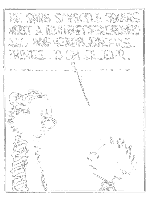» About » Archive » Submit » Authors » Search » Random » Specials » Statistics » Forum » RSS Feed Updates Daily
No. 1700: Spotting the Difference
First | Previous | 2014-01-13 | Next | Latest

First | Previous | 2014-01-13 | Next | Latest
Permanent URL: https://mezzacotta.net/garfield/?comic=1700
Strip by: Alien@System
{A bunch of blurry image averages, sorted by year}
The author writes:
Given that there has been a general complaint and a bit of discussion about the Garfield strips becoming more and more repetitive and simpler since they are created by computer, I decided to try and find proof for (or at least evidence supporting) the increasing simplicity of the strip.
To do that, I first devised an algorithm to get a decent measure for the cut-n-paste-y nature of a strip. For that, it is split into the three frames, which are then compared in a cycle, meaning we determine the RGB difference between the first and second, second and third as well as third and first frame. We then overlay these three frames and give every pixel the minimun in R, G, and B of the difference frames at that location. This way, only pixels that are different in all three frames remain coloured. The result is then inverted, since on a computer screen, white is generally seen more as nothing than black is. The result might then look like this:

In general, the more "boring" a strip is, the more of the resulting image will be white. However, these results should be, like every machine-interpreted data, taken with a pinch of copper. For example, the strip might have a very crowded middle panel, surrounded by two cut-n-paste panels. This, while interesting for the reader, would be registered as "boring". And things which add not much to the picture, like the dotted background used until 1993, or changing background colours, will show up as large coloured areas. Similarly, dithering and edge artifacts will create a bit of difference even when the panels themselves are similar. However, the last, since present in all pictures in equal measure, does not need to be accounted for when interpreting. To assemble the picture, I did this (or rather, let the computer do this) for 64 evenly distributed strips for every year, averaged the results and put them all together, sorted by year. I left out 1978 and 2013, since I was too lazy to adjust the algorithm for incomplete years. As the final result was rather low in its intensity, I inverted it again, doubled the colour values and flipped it back, increasing the contrast.
What do we learn? First, we will be suprised to see the lightness of the whole picture (remember that this is after I doubled the intensity). Even in the "golden age", when the strips were at their best, most of them were talking heads with little variation, as close to cut-n-paste as one is able to do when drawing by hand. Similarly, when actually comparing the frames, it is evident that even the computer-generated frames are assembled separately, not simply duplicated. The visible difference for computer and human eye is the same, namely: not much.
But we also see what we expected: Around 2004, the colour of the pictures takes a plunge. This, unlike the lightening between '93 and '95, cannot be explained by a change in the background. (As explained before, sometime in 1994, Jim Davis stopped using the dotted, angled background shadows which are responsible for much colour in the years previous - in 1990 the slope of the dots can be spotted instantly). Therefore, we conclude that the difference between the strips themselves has decreased, successfully twisting the facts to suit our theory.
Two other small effects can be seen in the pictures. First, the advent of the standardised, computer-generated strip size in 2012 is clearly visible due to the disappearance of the borders. Secondly, compared to the 80s, the strip has become less wordy, as evidenced by the number of dialogue lines visible, declining from three-and-shadows in 1983 to two-and-what's-probably-a-frame in 2012.
We can also discover patterns we already know of, like the accuracy of the text alignment, the Jon-left-Garfield-right placement, the constant table height, and the introduction of Liz as major character (she's easy to see in 2003).
[[Original strips: (64 evenly distributed strips for every year)]]
